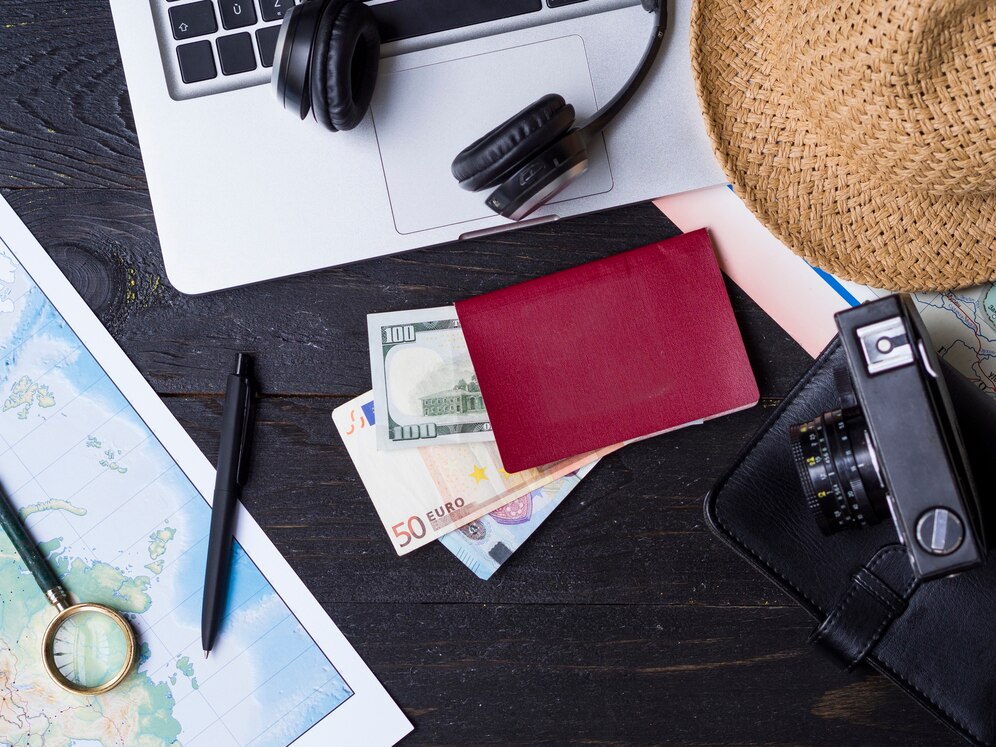The passport photo, a seemingly mundane document staple, takes on surprising complexity when viewed through the lens of cultural understanding. Beyond ensuring proper lighting and a neutral expression, navigating the world of visa photography demands sensitivity to diverse social norms and expectations. From headwear restrictions in religious cultures to subtle hand gestures carrying unintended meanings, cultural considerations can make the difference between visa approval and denial. This pre-paper delves into this fascinating intersection of photography and cultural etiquette, exploring how seemingly minor details in a visa photo can have profound implications for an applicant’s travel aspirations.
The Importance of Visa Photography
Visa photography is a critical component of the immigration process, serving both functional and cultural purposes. Functionally, these photographs are used by immigration authorities to verify the identity of individuals applying for visas. However, beyond this practical aspect, visa photography holds cultural significance, as it encapsulates a person’s identity and becomes a visual representation of their cultural background.
In many cultures, the act of having one’s photograph taken carries deep cultural meaning. From considerations of modesty to beliefs about the capturing of one’s soul, the cultural dimensions of photography vary widely. Understanding this cultural backdrop is vital for immigration officials and photographers alike, as misinterpretations or insensitivity in visa photography can inadvertently perpetuate biases or create barriers in the immigration process.
Moreover, visa photographs often become enduring symbols for individuals seeking entry into a new country. They represent the first impression made on immigration officials, shaping initial perceptions of an applicant. This initial visual encounter can influence decision-making processes, making it essential for visa photographs to be culturally sensitive and inclusive.
For immigrants, the visa photograph is more than a mere identification tool; it becomes a representation of their identity, values, and cultural heritage. Recognizing the importance of these photographs within a broader cultural context can lead to a more empathetic and understanding immigration system, fostering an environment that respects and acknowledges the diversity of individuals seeking entry into a new country.
As we delve into the cultural aspects of visa photography, it becomes evident that a nuanced understanding of the role and impact of these images is essential for creating an immigration process that is not only efficient but also culturally respectful and inclusive. The subsequent sections of this paper will explore these cultural dimensions in greater detail, providing insights into the diverse factors that contribute to the intricate tapestry of visa photography worldwide.
Cultural Differences in Photography
Cultural diversity manifests itself in myriad ways, and visa photography is not exempt from the influence of these variations. Different cultures possess distinct preferences, norms, and taboos when it comes to photographic representation. Understanding and navigating these differences is crucial for photographers and immigration officials to avoid unintentional cultural biases and ensure a more equitable and inclusive process.
- Photography Styles: In some cultures, formal and stoic poses are preferred, conveying a sense of professionalism and seriousness. In contrast, others may lean towards more relaxed and informal poses, reflecting a cultural inclination towards warmth and approachability. Attire choices also vary significantly across cultures. What might be considered appropriate or conventional in one culture may be perceived as unconventional or even disrespectful in another.
- Facial Expressions: Cultural norms greatly influence the acceptability of certain facial expressions. While a smiling face may be universally associated with positivity, some cultures may consider a neutral expression more appropriate, particularly in official or serious contexts. Eye contact, another crucial aspect of facial expression, can have cultural nuances. In some cultures, direct eye contact is a sign of confidence and honesty, while in others, it may be seen as confrontational or disrespectful.
- Background Settings: The choice of background in visa photographs is culturally charged. While some cultures may prefer a plain, neutral background, others may appreciate more elaborate or symbolic settings that reflect their cultural heritage. Cultural symbols and colors in the background can carry significant meaning. Understanding and respecting these symbols is vital for creating photographs that resonate positively with applicants from diverse cultural backgrounds.
- Gender Considerations: Cultural norms related to gender roles and modesty influence the way individuals, particularly women, may prefer to be photographed. Photographers and immigration officials need to be sensitive to these considerations to ensure that the visa application process is respectful of cultural norms.
Navigating these cultural differences requires a level of cultural competence and awareness on the part of both photographers and immigration authorities. Establishing guidelines that account for these variations can contribute to a more culturally sensitive and inclusive visa photography process. This understanding not only facilitates more accurate identification but also promotes a sense of respect and recognition for the diverse cultural identities of visa applicants. The subsequent sections will delve into recommendations for global visa photography, emphasizing the need for a nuanced and culturally informed approach.
Recommendations for Global Visa Photography
Recognizing the cultural diversity inherent in visa photography, it is essential to establish comprehensive guidelines that promote inclusivity and cultural sensitivity. The goal is to create a standardized yet adaptable approach that respects the varied preferences and values of individuals from different cultural backgrounds. The following recommendations aim to achieve this balance:
- Culturally Inclusive Guidelines: Develop a set of guidelines that incorporates examples from various cultures, showcasing acceptable variations in poses, expressions, and attire. Include visual references and explanations to assist both photographers and applicants in understanding the cultural considerations associated with visa photography.
- Diverse Representation in Official Guidelines: Ensure that official visa application guidelines feature a diverse range of individuals from different cultural backgrounds. This can help set realistic expectations for applicants and photographers, fostering a more inclusive approach. Collaborate with cultural experts and community representatives to contribute insights and recommendations for culturally sensitive visa photography.
- Training for Immigration Officials: Provide cultural sensitivity training for immigration officials who review visa applications. This training should emphasize an understanding of diverse cultural norms related to photography and encourage a nuanced assessment of visa photographs. Establish a feedback loop for immigration officials to share insights and experiences related to cultural considerations in visa processing.
- Community Engagement: Foster engagement with cultural and community organizations to gather feedback on visa photography practices. This collaborative approach can help identify potential areas for improvement and ensure that guidelines remain culturally relevant. Organize outreach programs to educate communities about visa photography requirements, demystifying the process and addressing any concerns related to cultural sensitivity.
- Regular Review and Updates: Establish a system for regular review and updates of visa photography guidelines to reflect evolving cultural norms and preferences. Embrace a dynamic approach that considers feedback from various stakeholders, including photographers, immigration officials, and community representatives.
| Cultural Aspect | Recommendations for Visa Photography | Additional Considerations |
| Photography Styles | – Include examples of formal and informal poses. | – Acknowledge cultural variations in posing preferences. |
| Facial Expressions | – Highlight the acceptability of neutral and smiling expressions. | – Explore cultural interpretations of facial expressions. |
| Background Settings | – Showcase a variety of neutral and culturally symbolic backgrounds. | – Offer flexibility for individuals to choose culturally relevant settings. |
| Gender Considerations | – Address cultural norms related to modesty and gender roles. | – Allow for diverse gender representation in visa photography. |
Photographer’s Sensitivity and Communication
In the realm of visa photography, the photographer’s role extends beyond technical proficiency to encompass a nuanced understanding of cultural sensitivities. Sensitivity is paramount, requiring photographers to approach their work with awareness and respect for the diverse cultural backgrounds of their subjects. This sensitivity goes beyond mere adherence to guidelines; it involves a deeper appreciation for the cultural nuances that shape an individual’s preferences and comfort levels during a photo session.
Effective communication becomes a linchpin in this process. Photographers must engage with visa applicants in a manner that is not only professional but also culturally attuned. Establishing rapport and ensuring clear communication about the photographic process can alleviate any potential discomfort or misunderstandings. The photographer’s ability to convey instructions, understand the preferences of the visa applicant, and adapt their approach accordingly is crucial for capturing an image that resonates positively with both the individual and the immigration authorities.
Moreover, photographers should be equipped with cultural competency training to navigate the subtle intricacies of diverse cultural practices. This training enables them to anticipate potential cultural considerations, recognize non-verbal cues, and foster an environment that facilitates a more authentic and culturally respectful photography experience. It empowers photographers to navigate the delicate balance between adherence to standardized guidelines and the flexibility required to accommodate cultural diversity.
In instances where a language barrier exists, photographers should explore non-verbal communication strategies and be patient in ensuring mutual understanding. Cultural sensitivity in photography is not a one-size-fits-all approach; it requires adaptability and an openness to learning about the cultural backgrounds of the individuals being photographed.

